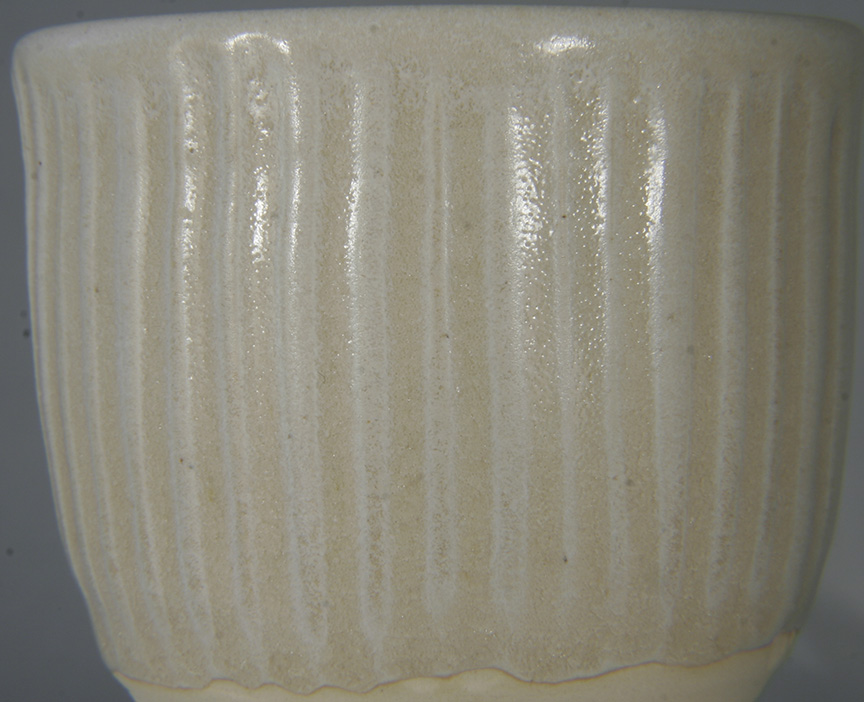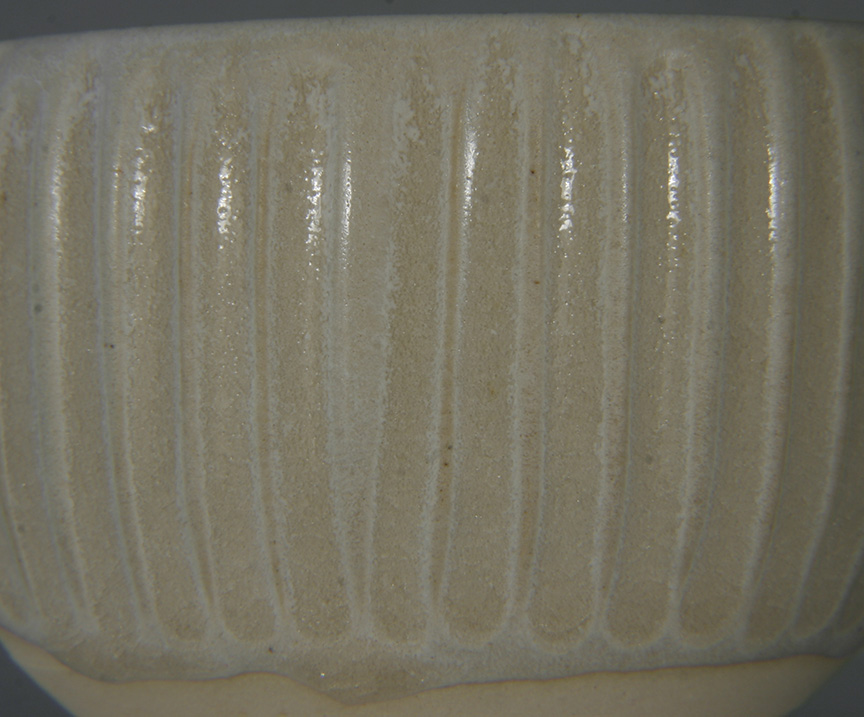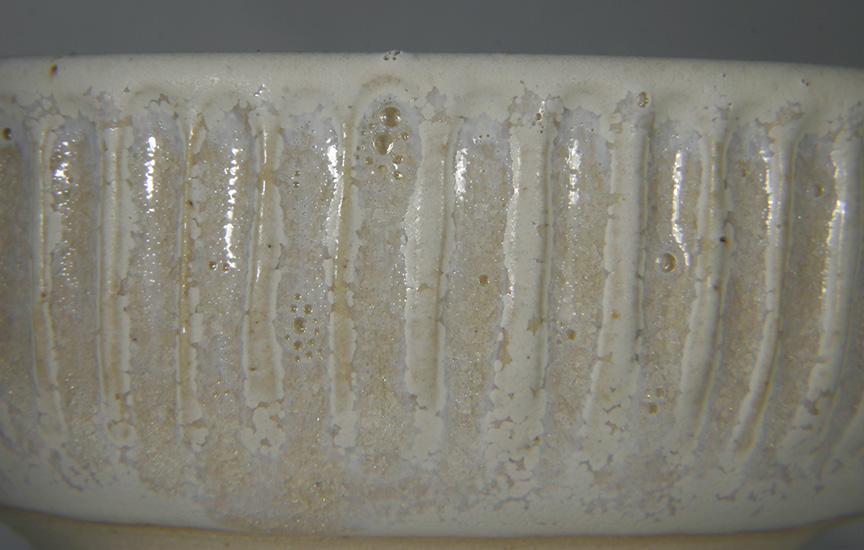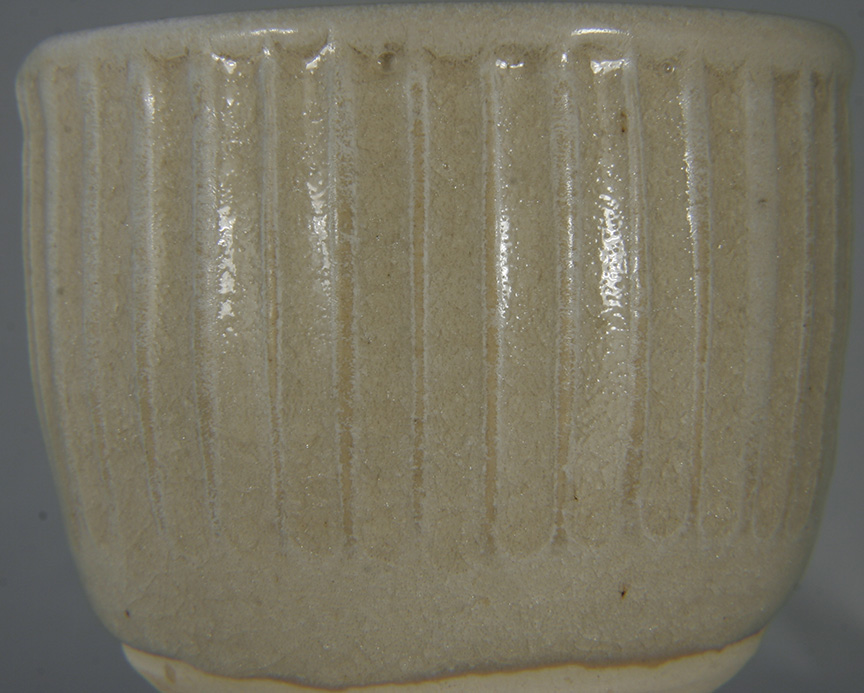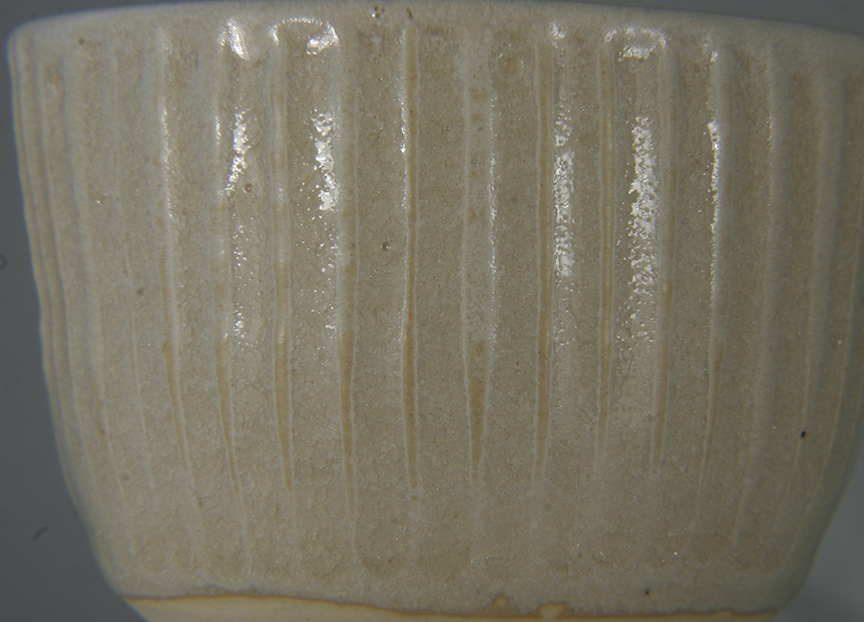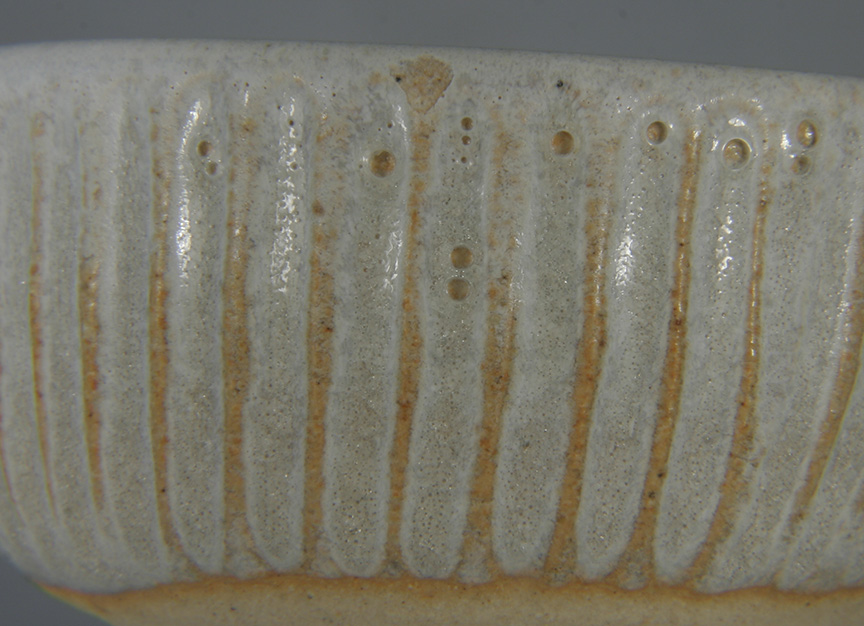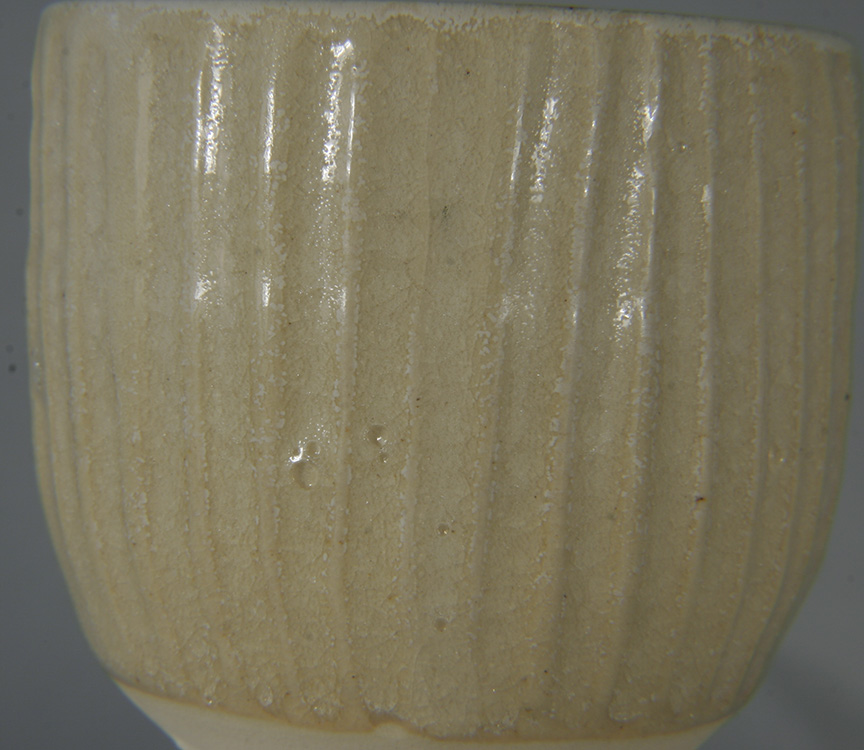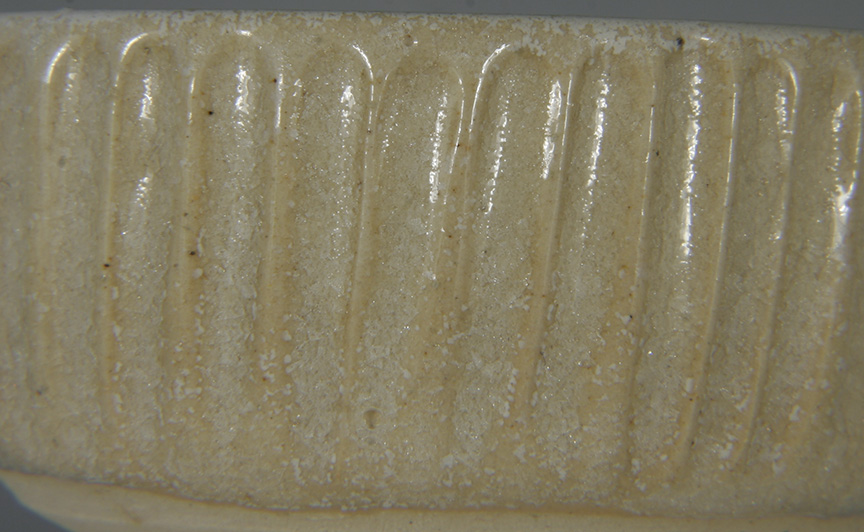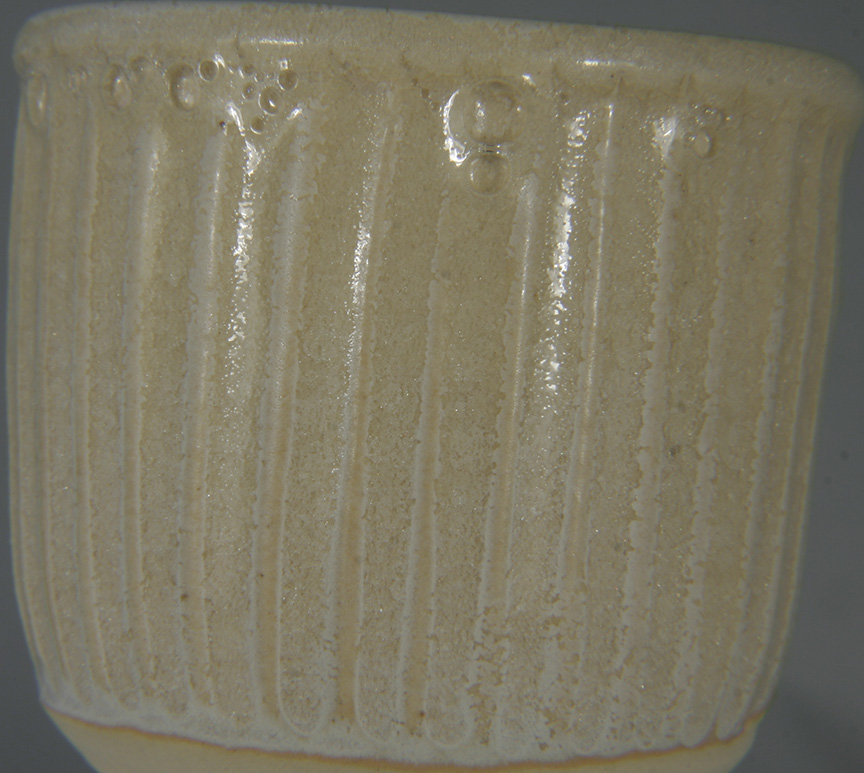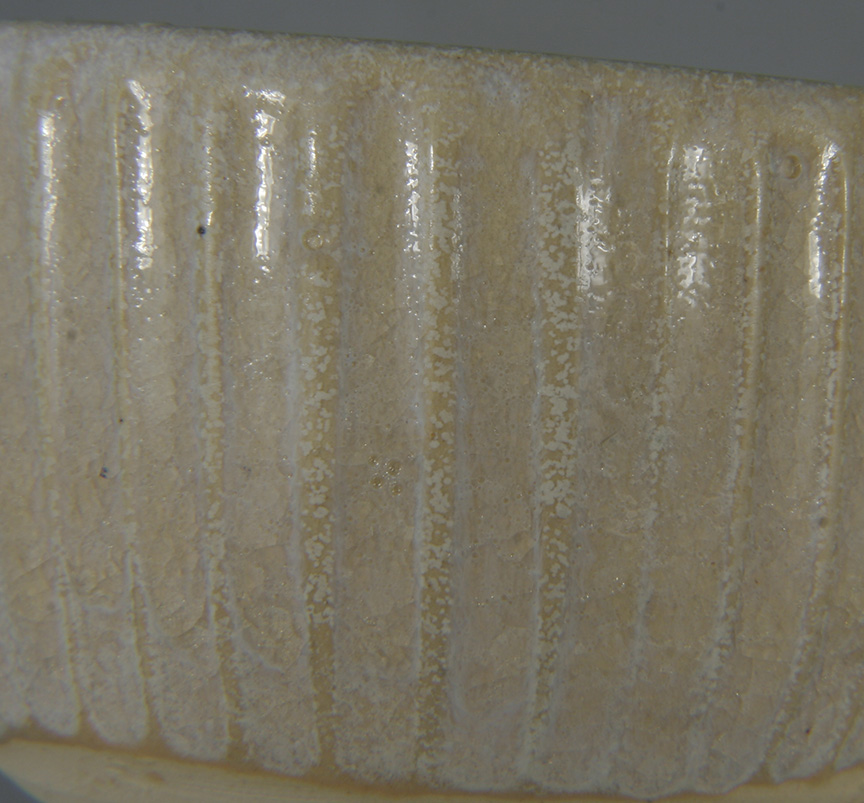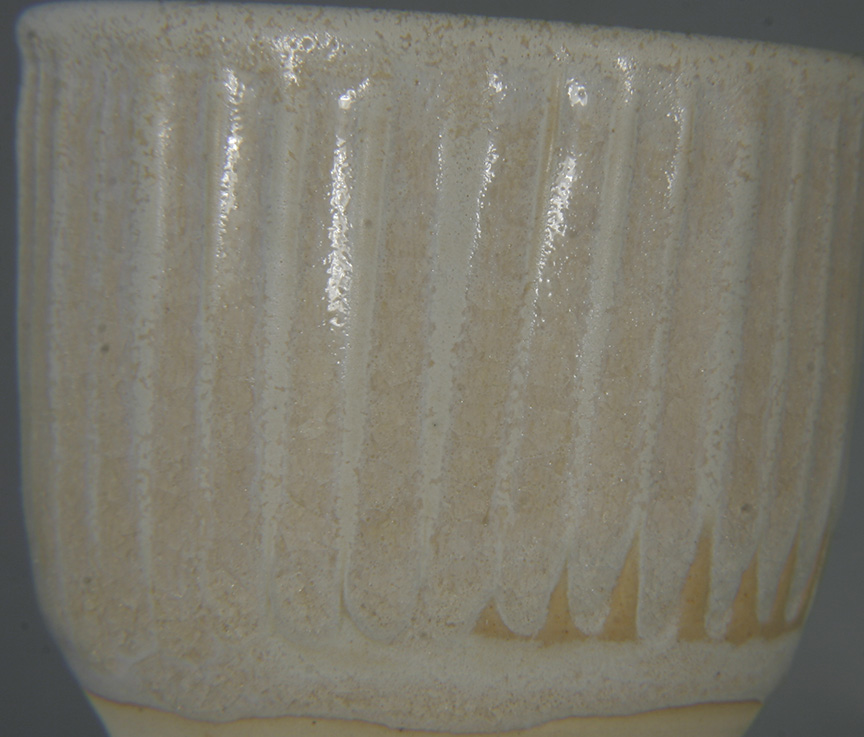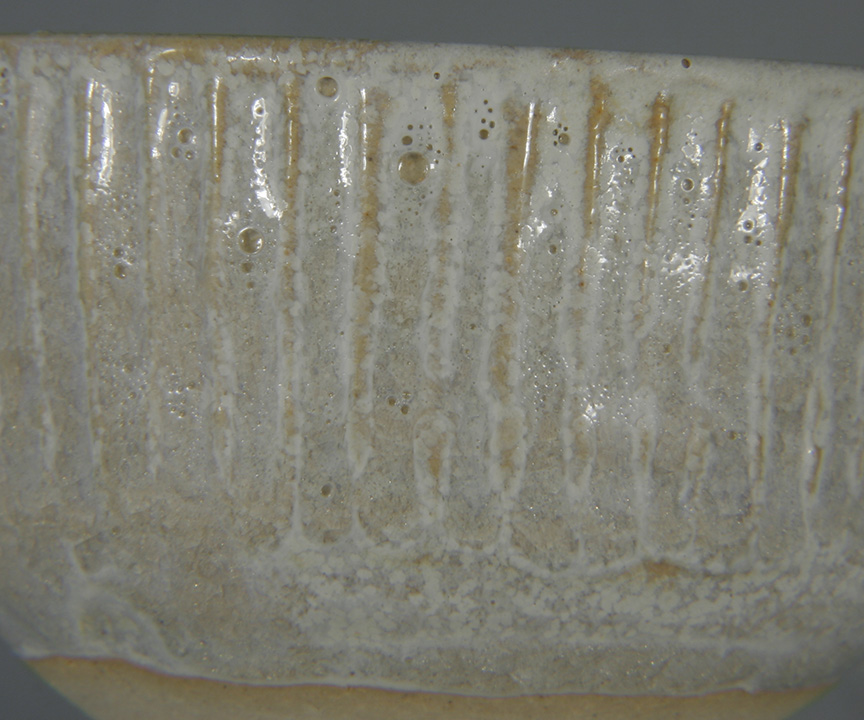The Alkaline Grid Test
There are six glazes represented in this test, and four different firing
protocols. These tests were all fired to a hard cone 6 on a cone 6 B-mix
variant.
Each vertical block of glazes below shows one of the six glazes, the results
in the four firings are shown, Firing 1 - Firing 4, from top to bottom.
The firings are successively more agressive in the degree to which the cool
down portion of the firing is extended. The first three firings incrementally
extend the firing in the region 1650 deg F to 1850 deg F. The fourth
firing additionally slows the cool down of the firing in a different
higher temperature region.
The first firing is a control firing, and cools at the rate of my large studio
kiln, but has a one hour hold at 1650 deg F. This is approximated by cooling
at 300 deg F an hour to 2000 deg F, 250 deg F an hour to 1850 deg F, and 100
deg F an hour to 1650 deg F.
The second firing differs from the control by cooling at 100 deg F an hour in
the window [1850,1650] deg F.
The third firing differs from the control by cooling at 50 deg F an hour in
the window [1850,1650] deg F.
The fourth firing differs from the control by cooling at 50 deg F an hour in
the window [2000,1650] deg F, and 30 deg F an hour in the window [1650,1550]
deg F. There is no hold at 1650 deg F in this last firing.
The 6 glazes are also arranged on a grid, with pairs of glazes having
successively less CaO and more Alkali metal. The second glaze of each pair
has higher SiO2.
The pair of glazes 0_0/0_1 have CaO+MgO = .28.
The pair of glazes 1_0/1_0 have CaO+MgO = .21
The pair of glazes 2_0/2_1 have CaO+MgO = .14
Glaze 0-1
Return to Top
Glaze 1-0
Return to Top
Glaze 1-1
Return to Top
Glaze 2-0
Return to Top
Glaze 2-1
Return to Top
Carol's Home Page









